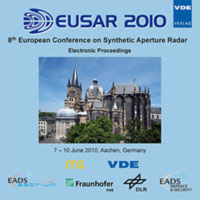A study on irregular baseline constellations in SAR tomography
Conference: EUSAR 2010 - 8th European Conference on Synthetic Aperture Radar
06/07/2010 - 06/10/2010 at Aachen, Germany
Proceedings: EUSAR 2010
Pages: 4Language: englishTyp: PDF
Personal VDE Members are entitled to a 10% discount on this title
Authors:
Nannini, Matteo; Reigber, Andreas; Scheiber, Rolf (German Aerospace Center (DLR), Microwaves and Radar Institute (HR), Oberpfaffenhofen, Germany)
Abstract:
SAR Tomography (SARTom) is the natural extension of SAR Interferometry (InSAR) to solve for multiple phase centers within a resolution cell and obtain the 3-dimensional (3D) representation of a scene. In order to obtain a reasonable resolution and reject ambiguities, a large tomographic aperture sampled with a sufficient number of acquisitions is required. For most applications this number represents a critical factor. Basically, the reference acquisition geometry usually assumes a regular sampling of the tomographic aperture. The potential of irregular constellations for SARTom represents a field that has not yet been completely investigated and could allow one to reduce the number of acquisitions keeping the constraint of resolution and ambiguity rejection. In this context, this paper presents a study on how irregular distributions of baselines impact the tomographic reconstruction. In particular, the acquisition geometry will undergo a minimum redundancy design in term of baselines, in order to estimate the elements of the sample covariance matrix. The study is applied on simulated as well as on real data acquired at P-band by the E-SAR system of the German Aerospace Center (DLR).


